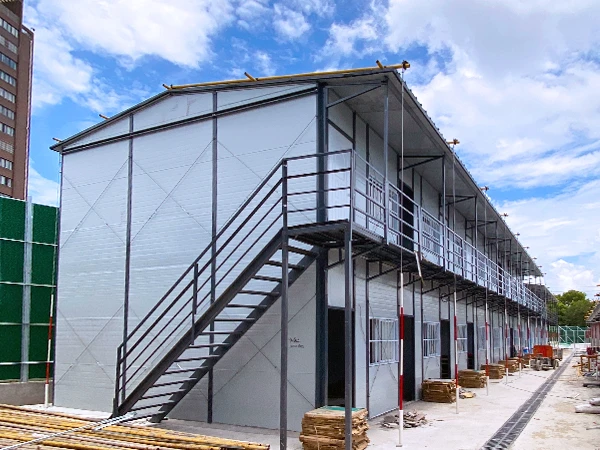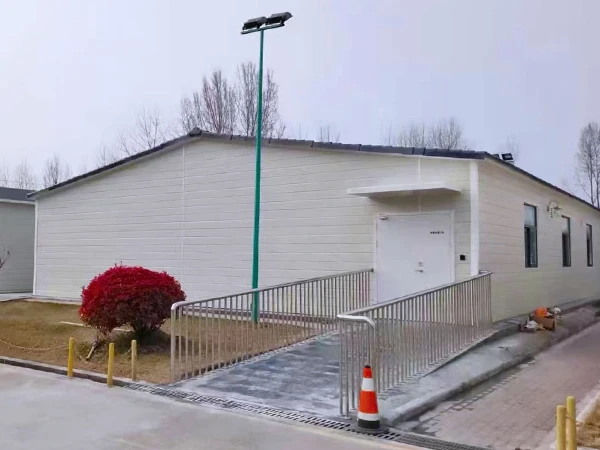Hit enter to search or ESC to close
If you’ve been tracking modular building, you’ve seen the momentum. Post-pandemic, demand for quick, relocatable space surged—construction camps, clinics, and classrooms needed to be up in days, not months. The flat pack container house sits at the center of that shift. It ships compact, assembles fast, and—when specified right—feels surprisingly permanent. I’ve walked a few sites lately; to be honest, the quality gap between vendors is… noticeable.

Two clear trends: better thermal envelopes (PIR/rock wool cores, fewer thermal bridges) and faster on-site commissioning (plug-and-play MEP, pre-cut openings). Many customers say the newest flat pack container house models feel “less site hut, more micro-building.” Lead times are tightening too—4–6 weeks is becoming common for standard kits.
| External size | ≈ 6055 × 2435 × 2896 mm (L×W×H); real-world use may vary ±10 mm |
| Frame steel | Q235B/Q345B, powder-coated; hot-dip galvanizing optional |
| Wall/roof panel | 50–100 mm sandwich (PIR or rock wool); λ ≈ 0.022–0.038 W/m·K |
| Floor system | 18 mm cement board + PVC or laminate; floor load ≈ 2.0–3.0 kN/m² |
| Electrical | 220–240 V or 110–120 V; CE/CB/UL-listed components (model-dependent) |
| Stacking | Up to 3 stories (site engineering required for wind/seismic) |
Materials: structural columns and beams are laser-cut, robot-welded, then powder coated; corner fittings align with ISO 1161 geometry; panels use PIR for higher fire performance or rock wool for A1 non-combustibility. Joints get EPDM gaskets and polyurethane sealant; roof edges use anti-capillary laps. Methods: torque-controlled bolting (often M12), high-rivet shear connections, and pre-wired junction boxes. Testing: water spray test at ≥ 2.0 L/min·m² for 30 min; insulation per ASTM C518; finish adhesion per ISO 2409; grounding continuity ≤ 0.5 Ω; wind load checked to ASCE 7/EN 1991. Typical service life: around 15–25 years with periodic repainting.
Rapid schools, site offices, pop-up clinics, worker camps, disaster-relief shelters, retail pods, and rental fleets. One mining operator told me their flat pack container house dorms went up “in under a week, including AC,” which tracks with my own visits—three workers can assemble a unit in 3–4 hours with a telehandler.
| Vendor | Origin | Steel/Finish | Lead time | Certs/Docs | Notes |
|---|---|---|---|---|---|
| ZN House (Flat Pack Container House) | Fanxiang Village, Taoyuan Town, Wujiang District, Suzhou, China | Q235/Q345, powder coat; HDG optional | ≈ 4–6 weeks (standard) | ISO/CE docs, load/water tests | Good cost-to-performance, tidy wiring |
| Vendor B (EU prefab) | EU | EN 1090 steel, baked enamel | 6–10 weeks | EN/CE, DoP | Higher price, strong documentation |
| Vendor C (Local builder) | Local/Regional | Painted mild steel | 2–8 weeks | Varies | Fast service, variable QC |
A Central Asia camp stacked 2 stories (wind ≈ 38 m/s); water ingress: none after 30-min spray; interior SPL decreased ≈ 24 dB with rock wool walls—quiet enough for offices. In a coastal rental fleet, HDG frames cut rust touch-ups by about 70% over 24 months. It seems the latest flat pack container house models are holding up better than their 2018-era cousins.
Note: Always verify local code compliance (IBC/EN/GB) and site loads (ASCE 7/Eurocode). Coastal or seismic zones need project PE sign-off.
If you need fast, scalable space, a quality flat pack container house is hard to beat. Ask for panel certificates, frame coating specs, and a water test report. And, if possible, visit a previous site—five minutes on the roof tells you everything.
If you are interested in our products, you can choose to leave your information here, and we will be in touch with you shortly.







